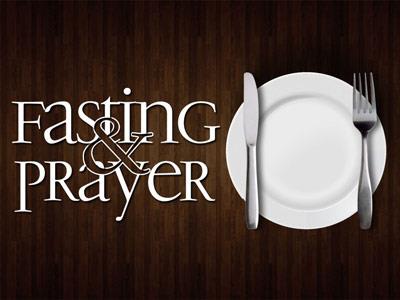-
The Altar Of Incense And Prayer Series
Contributed by Michael Luke on Mar 4, 2009 (message contributor)
Summary: This is the fourth message about the relation of the Old Testament Tabernacle and the New Testament
SERIES: “DISCOVER THE LESSONS OF THE TABERNACLE”
TEXT: EXODUS 30:1-10
TITLE: “THE ALTAR OF INCENSE AND PRAYER”
OPEN: A. I want to share a story sent to me by one of my best friends, J. Dyer
--I wish you could see the look on Anna’s face right now. She’s kind of worried. You never know
what story my buddy J. is going to send me.
Bubba goes to Wednesday night prayer meeting and Bible study. He listens intently to the
lesson and toward the close of the meeting, the preacher asks for prayer requests. Bubba stands up
and says, “Preacher, I need you to pray for my hearing.” The preacher calls Bubba up to the front.
When Bubba gets there, the preacher has Bubba kneel on the floor. He puts his right finger in
Bubba’s left ear and his left hand on top of Bubba’s head. The preacher prays for a few minutes.
Then he puts his left finger in Bubba’s right ear and his right hand on top of Bubba’s head and
prays some more.
When the preacher finishes, he asks, “Bubba, how’s your hearing now?” Bubba replies, “I
don’t know preacher. It ain’t ‘til next Wednesday.”
B. Sometime back, we began our study of the tabernacle
--We’ve had a few interruptions. Two weeks ago, we didn’t have services here because of the
complications of the flood waters. Last week was Father’s Day and so, we had a Father’s Day
sermon. We’re back on track but I’d like to remind you of a few essential things:
1. Remember that the tabernacle was a large portable tent structure that served as the center of
worship for the Israelites as they traveled along their journey to the Promised Land
2. It was also the reminder of God’s presence among His people
--There’s a diagram of the tabernacle on an insert in your bulletin
3. The tabernacle was comprised of three areas:
a. The Outer Court
--It was the general meeting area for the tabernacle
1). All Jewish people who had business at the tabernacle were welcome
2). It held the Altar of Sacrifice and the Bronze Washbasin we studied several weeks ago
b. The Holy Place
--The Holy Place was the start of the tabernacle proper and was 30 ft. long x 15 ft. wide
a). This is the area where the priests performed a good number of their daily duties
b). It held the Menorah (Golden Lamp stand), The Table of Presence (Shewbread), and the
Altar of Incense
c. The Holy of Holies
--15 ft. square
a). This is the area where only the high priest could enter and do so only once a year to spread
the blood on the mercy seat of God on the Day of Atonement
b). Inside the Holy of Holies was the Ark of the Covenant
--which we’ll look at next week (God willing)
C. Today we’re going to look at the altar of incense and its relationship to prayer
--Ex. 30:1-10 – “Make an altar of acacia wood for burning incense. It is to be square, a cubit long
and a cubit wide, and two cubits high —its horns of one piece with it. Overlay the top and all the
sides and the horns with pure gold, and make a gold molding around it. Make two gold rings for
the altar below the molding—two on opposite sides—to hold the poles used to carry it. Make the
poles of acacia wood and overlay them with gold. 6 Put the altar in front of the curtain that is
before the ark of the Testimony—before the atonement cover that is over the Testimony—where
I will meet with you. Aaron must burn fragrant incense on the altar every morning when he tends
the lamps. He must burn incense again when he lights the lamps at twilight so incense will burn
regularly before the LORD for the generations to come. Do not offer on this altar any other
incense or any burnt offering or grain offering, and do not pour a drink offering on it. Once a
year Aaron shall make atonement on its horns. This annual atonement must be made with the
blood of the atoning sin offering for the generations to come. It is most holy to the LORD.”
1. The priest took a censer full of burning coals from the altar of sacrifice in one hand and some
specially prepared sweet incense in the other hand and ignited the incense by sprinkling it over
the burning coals on the altar of incense
--A thick cloud of smoke curled upward filling the tabernacle, symbolic of Israel’s prayers to
God
2. In the Bible, burning incense is often a picture of prayer
a. David prayed in Ps. 141:2a – “May my prayer be set before you like incense…”

 Sermon Central
Sermon Central



